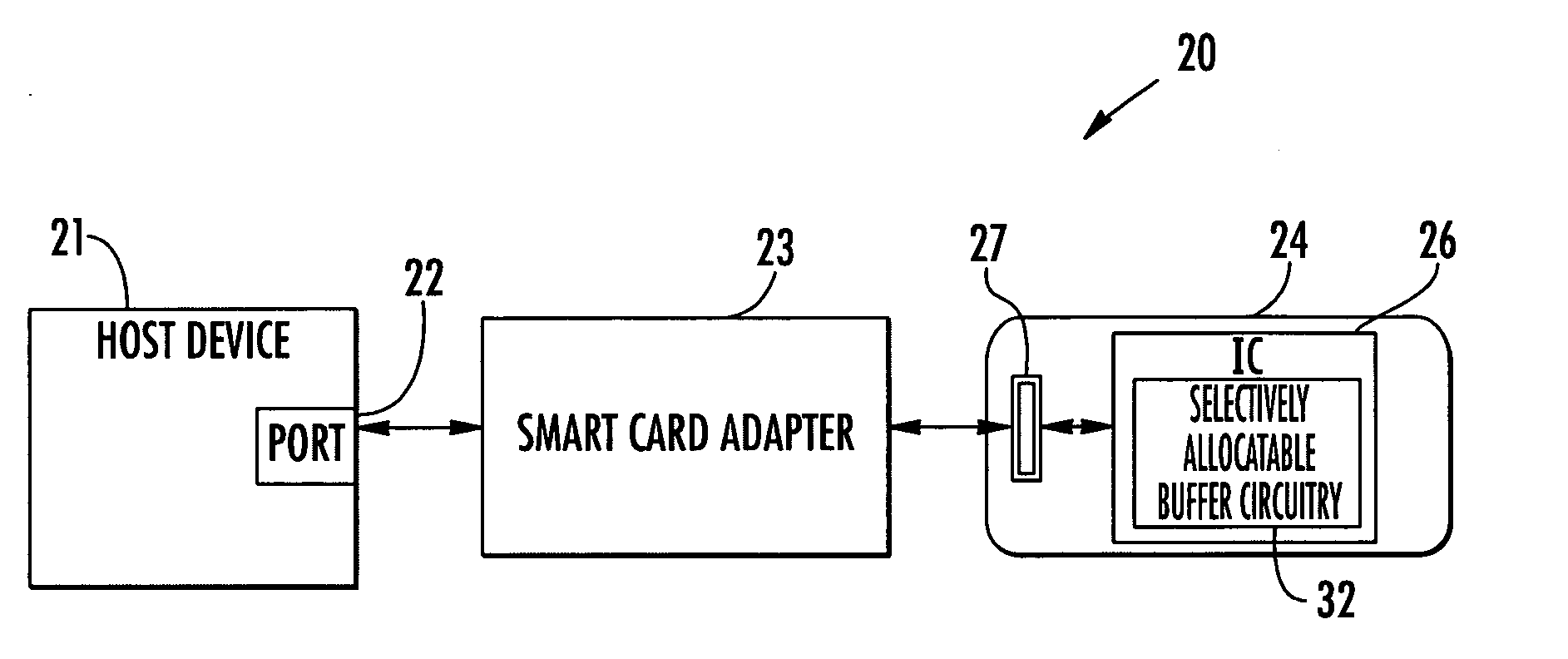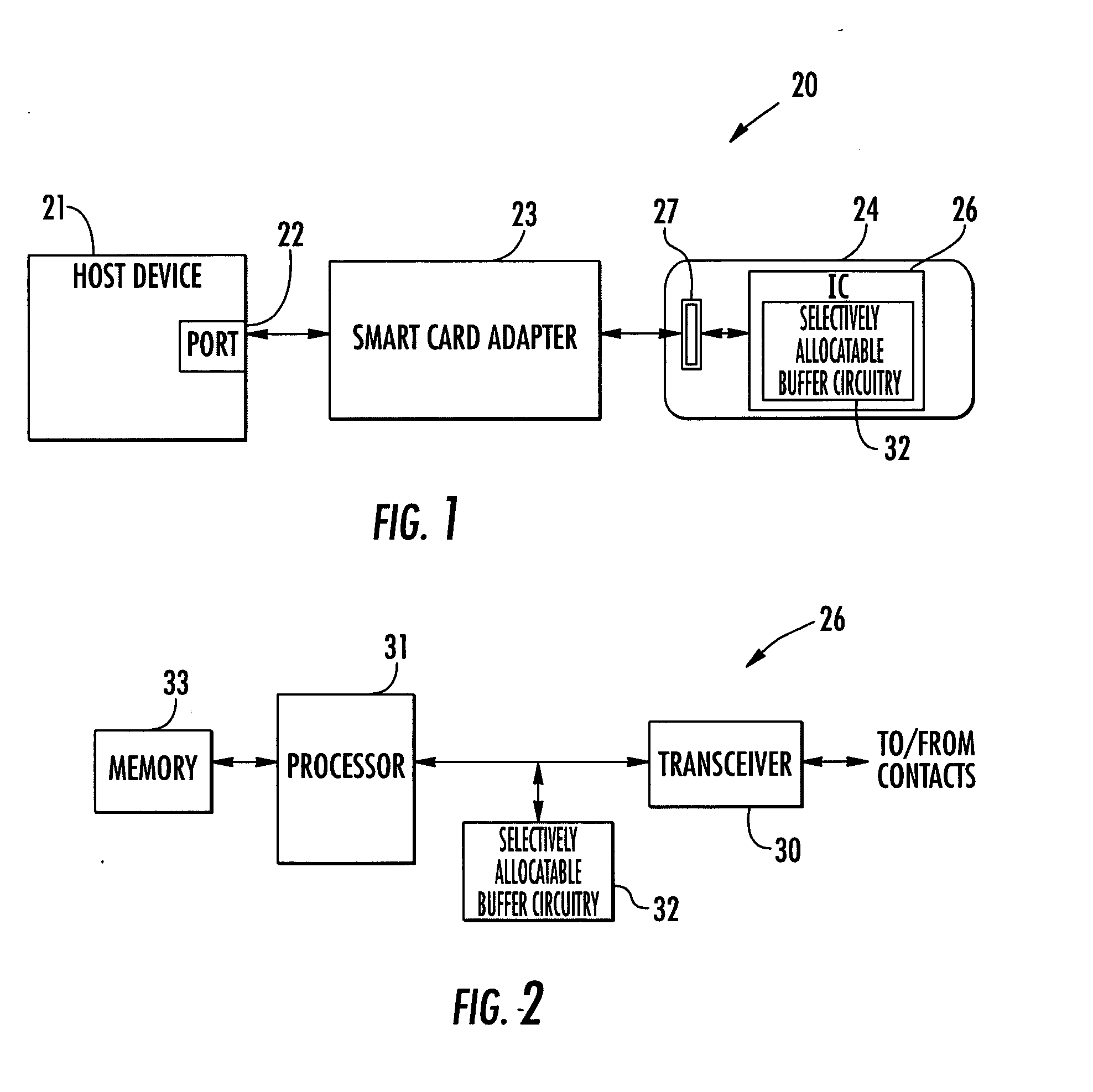Smart card with selectively allocatable data buffers and associated methods
a data buffer and intelligent card technology, applied in the field of information processing and storage, can solve the problems of increasing data transfer rates, requiring significantly higher data volumes to be transmitted, and relatively large amounts of data, and achieve the effect of improving data buffering and related systems and methods
- Summary
- Abstract
- Description
- Claims
- Application Information
AI Technical Summary
Benefits of technology
Problems solved by technology
Method used
Image
Examples
example 1
[0052] In a first exemplary configuration, a buffer 0 is used for all OUT transactions (e.g., endpoint 0 control transfer, endpoint 4 bulk out transfers, endpoint 5 interrupt out transfers). Furthermore, buffer 1 is used for endpoint 0 control transfers in the IN direction, buffer 2 is used for endpoint 1 bulk IN transfers, and buffer 3 is used for endpoint 2 interrupt IN transfers.
[0053] During an OUT transaction the USB host device 21 sends an OUT packet and associated data packet. By running the processor 31 faster than 12 Mbits / s, little or no bottlenecking may be achieved from OUT endpoints using this configuration. Furthermore, the processor 31 should have adequate time to copy the received bytes into the memory 33 (i.e., RAM). Accordingly, NACKs may thus be substantially avoided, and thus only one buffer need be used for OUT transactions in many applications.
[0054] Furthermore, during an IN transaction the USB host device 21 sends an IN packet and then expects an answer fro...
example 2
[0056] The second exemplary configuration uses the buffers 2 and 3 for endpoint 2 bulk IN transfers, and the buffers 0 and 1 for endpoint 1 bulk OUT transfers. Here, the idea is to use the buffers in a toggle mode. For example, after an OUT packet, the buffer 0 is available but the buffer 1 is disabled. Data is then copied into the buffer 0, which subsequently becomes unavailable while the buffer 1 becomes available, etc.
[0057] The process will be similar for IN endpoints as well. That is, the buffer 2 is preloaded with data. When an IN packet arrives at the USB smart card 24, the buffer 2 becomes available. The data is then sent to the USB host device 21. During this transfer, the processor 31 loads the buffer 3. When an IN packet arrives at the USB smart card 24, the buffer 3 becomes available. The data is sent to the USB host device 21. During this transfer the processor 31 loads the buffer 2, etc. Of course, it will be appreciated that numerous other buffer configurations are p...
PUM
 Login to View More
Login to View More Abstract
Description
Claims
Application Information
 Login to View More
Login to View More - R&D
- Intellectual Property
- Life Sciences
- Materials
- Tech Scout
- Unparalleled Data Quality
- Higher Quality Content
- 60% Fewer Hallucinations
Browse by: Latest US Patents, China's latest patents, Technical Efficacy Thesaurus, Application Domain, Technology Topic, Popular Technical Reports.
© 2025 PatSnap. All rights reserved.Legal|Privacy policy|Modern Slavery Act Transparency Statement|Sitemap|About US| Contact US: help@patsnap.com



